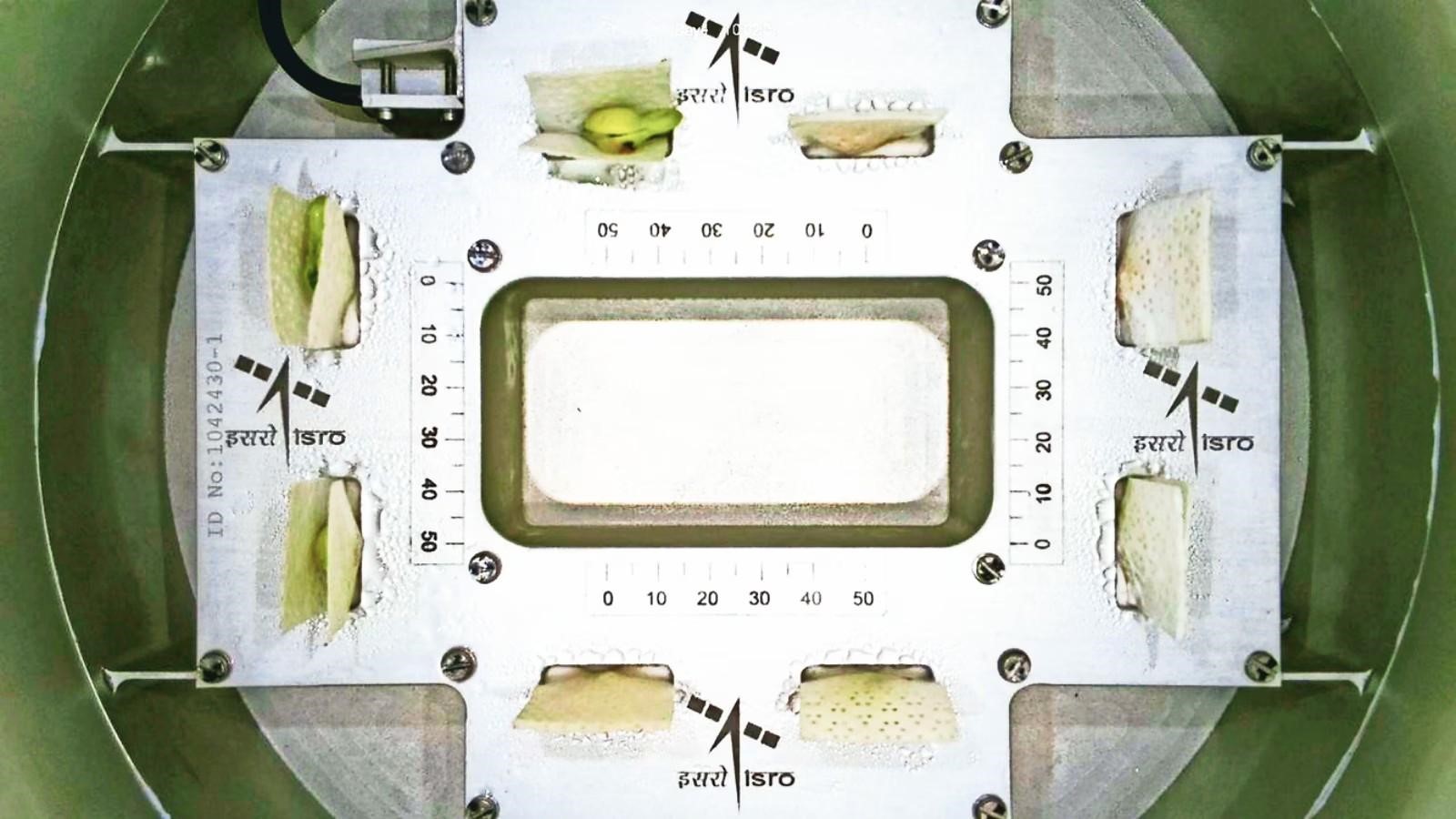ISRO’s Space Farming Breakthrough: Growing Plants in Space
Why in the news?
ISRO’s success in growing Lobia (black-eyed peas) in space through its CROPS module marks a significant step towards sustainable food sources for long-term space missions, overcoming challenges like microgravity and radiation.
Why Grow Plants in Space?
- Sustainable food source: Plants can provide essential food for astronauts during long space missions to celestial bodies like Mars and the Moon, where resupplying is difficult.
- Oxygen production: Plants help keep spacecraft breathable by releasing oxygen during photosynthesis.
- Waste recycling: Plants can recycle carbon dioxide and organic waste, creating a closed-loop life support system.
- Mental well-being: Caring for plants reduces stress and improves astronauts’ mental health.
Challenges of Growing Plants in Space
- Microgravity: In microgravity, plant roots cannot grow downward, and nutrient delivery becomes difficult since water clings to surfaces instead of reaching the roots.
- Radiation and temperature: Plants need protection from high radiation levels and extreme temperature fluctuations that could damage their DNA and hinder growth.
- Light limitations: In deep space, sunlight is scarce, preventing photosynthesis and causing plants to consume more oxygen than they produce.
How Plants Are Grown in Space?
- Hydroponics and aeroponics: Plants are often grown hydroponically (using liquid nutrients) or aeroponically (without soil), reducing water usage and eliminating pesticides.
- ISRO’s CROPS module: ISRO sent Lobia (black-eyed peas) to space using the Compact Research Module for Orbital Plant Studies (CROPS). The module mimics Earth-like conditions with a soil-like medium, water, sunlight-mimicking LEDs, and regulated temperature.
- Ideal plants: Quick-growing, nutrient-rich plants like lettuce, spinach, kale, and peas are ideal for space farming.
Sources Referred:
PIB, The Hindu, Indian Express, Hindustan Times




